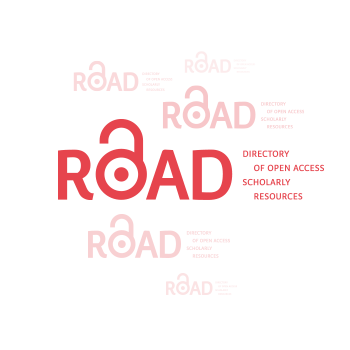The ideology of establishing Israeli museums during (1930-1983)
DOI:
https://doi.org/10.59994/pau.2022.2.1Keywords:
Israeli museums, The Knesset Museums Law, The Jewish Museum, The HolocaustAbstract
The study aimed to identify the ideology of establishing Israeli museums during (1930-1983), by analyzing the goals of building museums in a period of time starting from their development in the “kibbutz” collective settlements until the approval of the Museums Law in 1983. The study concluded that there is a diversity in the Israeli ideology in building museums, represented by the competitiveness of the diverse Jewish culture in Israel, and its role in documenting the Jewish Holocaust, which attracted the public’s sympathy about the experience of the persecution of the Jew, while the kibbutz museums focused on the Holocaust from another perspective by depicting the experience of The ghetto fighters in their confrontation with the Nazis, which confirms the lack of unification of the vision from the Holocaust museums, whether the experience of persecution or resistance, while there was an ideology in the development of museums represented in documenting the historical narrative and linking modern Israel with the ancient history of the Jews. Finally, the museums focused on documenting the experience of the military force that had a role in establishing Israel after they killed the Palestinians and expelled them from their land in 1948. It became clear that the Israeli museums were random targets until the Knesset passed the Museums Law in 1983 to organize and define the objectives of the museum in Israel. This study investigates the ideology behind the Israeli museum establishment from 1930 to 1983. It reveals diverse motivations, particularly in representing Jewish culture and documenting the Holocaust. The study also uncovers contrasting narratives within Holocaust museums and highlights the role of museums in documenting historical narratives and the military's role in Israel's establishment. The enactment of the Museums Law in 1983 marked a significant step in regulating and defining the objectives of Israeli museums.
Downloads
References
المراجع العربية:
المسيري، عبد الوهاب. (2018). الإنسان والحضارة والنماذج المركبة دراسات نظرية وتطبيقية. دار دوّن للنشر والتوزيع.
عبد الله، علي. (2012). اليهود من عهد داوود إلى دولة إسرائيل. وكالة الصحافة العربية.
المسيري، عبد الوهاب. (1999). موسوعة اليهود واليهودية والصهيونية: نموذج تفسيري جديد- المجلد الثالث: الجماعات اليهودية: التحديث والثقافة. دار الشروق.
المراجع الإنجليزية:
Achouch, Y., & Morvan, Y. (2012). The Kibbutz and" Development Towns" in Israel: Zionist utopias: Ideals ensnared in a tormented history. Justice spatiale-spatial justice, 5, http://www.jssj.org/article/les-utopies-sionistes-des-ideaux-pieges-parune-histoire-tourmentee-kiboutz-et-villes-de-developpement-en-israel/. ffhalshs-01518735f.
Appelbaum, D. (2016). Why Are There So Many Jewish Museums? Retrieved from the site: https://mosaicmagazine.com/.
Appelbaum, R. (2017). World’s Jewish Museum. Tel Aviv, Asper Foundation.
Or, G. B. (2016). The Founding Contexts of Kibbutz Museums and the Case of the Mishkan Museum of Art, Ein Harod. Images, 9(1), 105-117.
Bar-Or, G. (2010). Kibbutz: architecture without precedents: the Israeli Pavilion, the 12th International Architecture Exhibition, the Venice Biennal. Top_print.
Bard, M. G., & Schwartz, M. (2005). 1001 facts everyone should know about Israel. UK, Rowman & Littlefield.
Ben-Amos, A. (2015). The Palmach Museum in Tel-Aviv: the past as a space of education, entertainment, and discipline. Museum History Journal, 8(2), 147-167.
Brenner, M. (1988). Jewish Culture In Contemporary America And Weimar Germany: Parallels And Differences, Yale University, Yale University Press.
Cesarani, D. (Ed.). (2013). After Eichmann: collective memory and Holocaust since 1961. UK, Routledge.
Clark, D. (2003). Jewish museums: from Jewish icons to Jewish narratives. European Judaism, 36(2), 4-17.
Curthoys, A. (1998). How Australia’s Histories Influence the Present.’. Plenary Session, International Council of Museums, Melbourne, 11.
Enemark, B. (2001). Holocaust remembrance and education in the state of Israel 1948–2000. Nordisk judaistik/Scandinavian Jewish Studies, 22(2), 107-130.
Engelberg-Baram, O. (2014). A "Glocal" Memory. The Collective Memory of the Holocaust from a Global and Local Perspective. The “Holocaust Martyrs’ and Heroes’ Remembrance Authority- Yad Vashem” and the “United States Holocaust Memorial Museum”,International conference “Museum and Politics” Proceedings, ICOM Germany, ICOM Russia, and ICOM US , 295-306.
Fenichel, D. (2005). Exhibiting ourselves as others: Jewish museums in Israel (Doctoral dissertation). Indiana University, India.
Freudenheim, T. L. (2001). The Obligations of the Chosen: Jewish museums in a Politically Correct World. European Judaism, 34(2), 80-90.
Glaser, J. R., & Zenetou, A. A. (1996). Museums: a place to work: planning museum careers. USA, Psychology Press.
Greenspahn, F. E., & Rendsburg, G. A. (Eds.). (2017). Le-maʿan Ziony: Essays in Honor of Ziony Zevit. USA, Wipf and Stock Publishers.
Hazan, S. (2011). The museum in the palm of your hand: presenting the Israel Museum through ICT. IL CAPITALE CULTURALE. Studies on the Value of Cultural Heritage, (3), 11-23.
Heller, S. (2010). Shaping the identity of peripheral art museums in Israel during the nineties. Doctoral dissertation, UK, Anglia Ruskin University.
Jaffe-Schagen, J. (2016). Having and Belonging: Homes and Museums in Israel (Vol. 5). USA, Berghahn Books.
Jaffe-Schagen, J. (2012). Imposed Utopias. Establishing Collections, Building the Israeli Nation State, Iziko Museums Publications in association with ICOM-SA, Cape Town, 123-136.
Kailani, W. (2016). Israeli Violations Against the Holy Places and the Historic Character of the Old City of Jerusalem. Jordan, The Hashemite Fund for the Restoration of al-Aqsa Mosque and the Dome of the Rock.
Kark, R., Perry, N. (2012). Museums and Multiculturalism in Israel, in Themes in Israeli Geography, Haifa University of Haifa, 88–99.
Katriel, T. (2013). Performing the past: A study of Israeli settlement museums. UK, Routledge.
Katriel, T. (1994). Sites of memory: Discourses of the past in Israeli pioneering settlement museums. Quarterly Journal of Speech, 80(1), 1-20.
Mautner, M., Sagi, A., & Shamir, R. (1998). Multiculturalism in a democratic and Jewish state. Tel Aviv: Ramot.
Mayer, G. (2016). Historical Museums in Israel: Semiotics of Culture. Journal of Arts & Humanities, 6(1), 43-58.
Miccoli, D., & Semi, E. T. (Eds.). (2013). Memory and ethnicity: ethnic museums in Israel and the diaspora. UK, Cambridge Scholars Publishing.
Morenos, L. (2019). Holocaust Museums Memory Construction through Architecture and Narrative, Yad Vashem and the Jewish Museum in Berlin. (Master Thesis), Holland, Leiden University.
Ofer, D. (2013). We Israelis remember, but how? The memory of the Holocaust and the Israeli experience. Israel Studies, 18(2), 70-85.
Orange, J. A. (2016). Translating law into practice: Museums and a human rights community of practice. Hum. Rts. Q., 38, 706.
Rosovsky, N., & Ungerleider-Mayerson, J. (1989). The Museums ofIsraei. New York, Harry N. Abrams.
Sela, A., & Kadish, A. (Eds.). (2016). The War of 1948: Representations of Israeli and Palestinian Memories and Narratives. Indiana University Press.
Shandler, J. (2016). The Jewish Museum Effect, (Jewish Peoplehood and Jewish Museums). USA, Taube Foundation for Jewish Life & Culture.
Sion, B. (2016). A Survey of Jewish Museums in Europe. The Rothschild Foundation (Hanadiv) Europe.
Tal, R., Bamberger, Y., & Morag, O. (2005). Guided school visits to natural history museums in Israel: Teachers' roles. Science education, 89(6), 920-935.
Thomas, S. A. (2015). Collective memory of trauma: The Otherization of suffering in the Israeli-Palestinian conflict. Berkeley Undergraduate Journal, 28(1), 192-228.
Wharton, A. (2007). Jewish Art, Leiden. Images, P-P1-7.
Wolenitz, D. (Novembre, 2017). Local Museums In Israel An Anchor To The Community For Building Identity And Preserving Cultural Heritage, The Role Of Local And Regional Museums In The Building Of A People’s Europe Musei E Comunità In Europa: Passato, Presente E Futuro European Conference 2017, Bologna (Italia), Chiesa Di San Mattia 13-14 Novembre 2017.
المراجع الفرنسية:
Chevalier, D. (2012). Musées et musées-mémoriaux urbains consacrés à la Shoah: mémoires douloureuses et ancrages géographiques. Les cas de Berlin, Budapest, Jérusalem, Los Angeles, Montréal, New York, Paris, Washington (Doctoral dissertation, Université Panthéon-Sorbonne-Paris I).
Ministère Israélien Des Affaires Étrangères(2010). Réalités D'israel, Israël, Ministère Israélien des Affaires Étrangères.
Morris, V. (2007). Concept et rôles d’un musée d’histoire locale, HAL.
Süssmann, R. (2005) Le Musée Du Palmach, Art Et Culture, Vol 44.
Scioldo-Zürcher, Y. (2016). Les migrations au musée! Sciences sociales et muséographie sont-elles complémentaires?. Revue européenne des migrations internationales, 3(4), 163-183.
المراجع الإسبانية:
González, A. G. C. (2013). Museología: información-flujos-conexiones. El museo en el siglo XXI. El museo desde nuestra óptica actual. Ciência da Informação, 42(3), 399-409.
Marinas, M. (2003). Historiografía Aplicada a Los Museos Virtuales Del Holocausto. Universidad De Los Andes.
Montoya Restrepo, I. A., & Dávila Dávila, C. (2005). Antecedentes y evolución del sistema de asentamiento y de los kibbutzim en Israel (1881-1944). Innovar, 15(25), 36-63.
Sznajder, M. (2007). Del Estado-refugio al Estado-conflicto: el Holocausto y la formación del imaginario colectivo israelí. Rev. mex. cienc. polít. soc, 49(200) 25-48.
Narváez Taranto, C. R. (2014). CONVENIO DE COOPERACIÓN ENTRE ECUADOR E ISRAEL (Bachelor's thesis), Ecuador.
المراجع الألمانية:
Geiger, M. (2005). Kulturen in Israel-Schmelztiegel, multikulturelle Gesellschaft, Weg zur nationalen kulturellen Identität? (Doctoral dissertation).
Haviv, A., Hexel, R. (2012). Der Dornbusch, der nicht verbrannte Überlebende der Shoah in Israel Herausgeberin, Übersetzung aus dem Hebräischen Rachel Grünberger-Elbaz, Israel, Friedrich-Ebert-Stiftung.
Kashi, U. (2008). Demokratiebildung in Israel: Geschichte und aktuelle Ansätze. Stiftung Erinnerung, Verantwortung und Zukunft.
Downloads
Published
How to Cite
Issue
Section
License
Copyright (c) 2024 Journal of Palestine Ahliya University for Research and Studies

This work is licensed under a Creative Commons Attribution 4.0 International License.
مجلة جامعة فلسطين الاهلية للبحوث والدراسات تعتمد رخصة نَسب المُصنَّف 4.0 دولي (CC BY 4.0)











